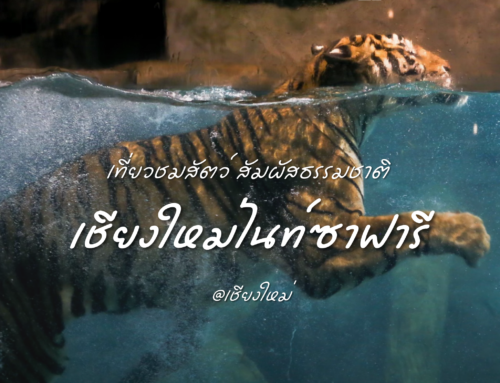Si Satchanalai Historical Park
With the total area of 45.14 square kilometres, this historical park extends over 4 sub-districts including Si Satchanalai, Sara Chit, Nong O and Tha Chai. Its ancient monuments are entirely located in the district of Si Satchanalai.
Among 283 ancient monuments already surveyed, those of major importance include Wat Chang Lom, Wat Chedi Chet Thaeo, Wat Nang Phaya, Wat Phra Si Ratana Mahathat Chaliang, the archaeological site at Wat Chom Chuen, as well as the Sangkhalok kilns and Thuriang kilns at Ban Pa Yang and Ban Ko Noi.
The Fine Arts Department realized the importance of the Ancient Town of Si Satchanalai and developed the Si Satchanalai Historical Park in order to preserve and maintain the monuments for the sake of public education.
In 1990, Si Satchanalai Historical Park was officially opened and, in 1991, the ancient town of Si Satchanalai was designated by UNESCO as World Cultural Heritage together with those of Sukhothai and Kamphaeng Phet.
Wat Chedi Chet Thaeo (วัดเจดีย์เจ็ดแถว)
This temple is located opposite to Wat Chang Lom. The important constructions in this temple are as follows: the main lotus-bud stupa, the main assembly hall (vihara), twenty-seven subordinate stupas (chedi) and five mandapas. The subordinate stupas bear numerous foreign influences including ideas from Lanka, Khmer, Mon, Bagan, Srivijaya and Lanna.
Wat Chang Lom (วัดช้างล้อม)
This temple is located almost at the centre of the historic town. The highlight of the temple is the main bell-shaped stupa enclosed by a square, laterite wall. The base of the stupa is tall and square in shape. There are thirty-nine standing elephants covered in stucco surrounding the base. The sculpted elephants are quite different from those found at other temples in which they are fully standing and are taller than their life-sized counterparts.
Wat Nang Phaya (วัดนางพญา)
The main stupa of the temple is bell-shaped, influenced by the Lankan style. This stupa is supported by a high base, which was once decorated with sculpted elephants similar to those found at Wat Chang Lom.
Wat Khao Phanom Phloeng (วัดเขาพนมเพลิง)
This temple is located on the top of a hill. The bell-shaped stupa and the seated Buddha subduing Mara made of lateritic blocks are the main features of the temple. The steps leading from the foot of the hill to the temple are also made of lateritic blocks. Khao Phanom Phloeng literally means the “Fire-Sacrifice Mountain”. According to the chronicle of the northern region, a seer (Rishi), called Rishi Satchanalai, striked a fire on the hilltop. It is believed that the name of the town, Si Satchanalai, was given after the seer.
Wat Khao Suwan Khiri (วัดเขาสุวรรณคีรี)
To the west of Khao Phanom Phloeng is a hill, called Khao Suwan Khiri, where a temple of the same name was built. The bell-shaped stupa stands on a square base made of laterite. Its cylinder supporting the spire has a stucco decoration of a walking Buddha circumambulating the cylinder (Kanchat in Thai).
Wat Chom Chuen (วัดชมชื่น)
Located on the bank of the Yom River, the temple (Wat) is about 400 mto the east of Wat Phra Si Ratana Mahathat Chaliang.
The bell-shaped stupa that is influenced by the Lankan style is situated behind a mandapa in good condition, and the base of a laterite assembly hall (Vihara) with columns, located in front of the mandapa.
Wat Chao Chan (วัดเจ้าจันทร์)
Situated behind Wat Chom Chuen is a temple of outstanding architectural features prior to temples of the Sukhothai period. The important building is a laterite “Prang” or a Khmer-style “Prasat”. The two terms are commonly used in Thai and Khmer languages for an architectural form, which is a square structure with a porch on each side and a tall body comprised of many levels that terminate in a rounded point.
Wat Phra Si Ratana Mahathat Chaliang (วัดพระศรีมหาธาตุเชลียง)
This is a large temple complex located to the southeast of Si Satchanalai town. The stucco figures that were placed to embellish the upper part of the main gate of the temple are reminiscent of the Bayon style in Khmer art.
a) The main assembly hall (vihara)
b) Phra That Mutao
c) Mandapa (open-sided pavilion) of Phra Attharot
d) Assembly Hall Phra Song Phi Nong (Vihara of two Buddha images)
e) Ordination Hall (Uposatha)
f) Kuti (monks’ quarters) Phra Ruang Phra Lue
Thuriang Kilns at Ban Ko Noi (เตาทุเรียง)
These kilns are located about 5 km from the Si Satchanalai ancient town. About 200 kilns are now found in an area measuring about 1.5 square kilometres. As of the present, 2 groups of kilns have been excavated and developed into site museums. These are as follows.
a) The group of kilns No.61
This group comprises 4 underground kilns dug into riverbanks. The main products of these kilns were large jars that could be used to store water and other dry materials.
b) The group of kilns No.42
Nineteen kilns have already been found in this group. These kilns can be divided into 2 major types; namely the updraft and cross-draft types.
Archaeological studies made on the ceramic kilns at Ban Ko Noi have yielded much knowledge about the development of ancient ceramic technology of Si Satchanalai.
Address : Amphoe Si Satchanalai, Sukhothai 64130
Tel : 055-950-714
Fax : 055-950-714
E-mail : sisat_pp@hotmail.com
Website : –






Leave A Comment